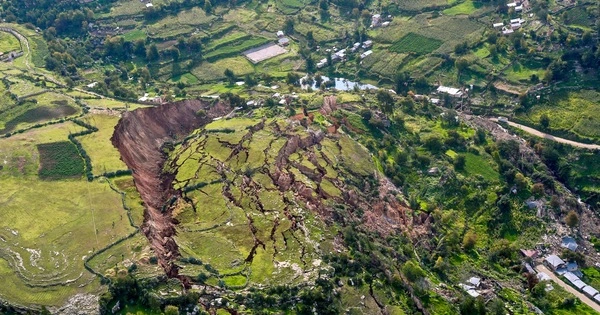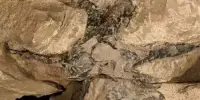Landslide risk can remain for years after even a weak earthquake. This is because earthquakes can weaken the soil and rock formations on hillsides, making them more vulnerable to landslides even after the ground stops shaking.
In addition to weakening the soil and rock, earthquakes can also trigger landslides directly. The shaking motion of an earthquake can cause loose soil and rocks to slide down steep slopes, creating a landslide. Even if the earthquake is relatively weak, it can still cause significant damage to the surrounding terrain and increase the risk of landslides for years to come.
Satellite observations have revealed that even years after a major earthquake, weak seismic ground shaking can cause powerful landslide acceleration. These findings contribute to a more complete picture of landslide behavior triggered by seismic activity, as well as tools for real-time monitoring to aid in rapid rescue operations.
This study contributes to a comprehensive understanding of the risk of earthquake-induced landslides, including coseismic landslide failures and post-earthquake landslide dynamics and it is of great significance for the long-term assessment and management of landslide hazards in seismically active areas.
Professor Jianbing Peng
Every year, landslides, a natural geological hazard around the world, cause significant human and economic losses. Landslides affected an estimated 4.8 million people worldwide between 1998 and 2017, killing over 18,000 people (estimates from WHO). Landslides can be caused by earthquakes, volcanoes, rainfall, or human activity; for example, the recent landslide that ripped across the Italian island of Ischia was caused by rainfall.
The study, which was published in the journal Nature Communications, focused on earthquake-accelerated landslides (EALs). These landslides are affected by long-term seismic effects and may continue to move at high speeds for a long time after the earthquake. EALs are particularly dangerous to humans, especially in seismically active areas.
Professor Zhenhong Li of Chang’an University (China) and Professor Utili of Newcastle University led the study. They also collaborated with Giovanni Crosta and Paolo Frattini of the University of Milan-Bicocca in Italy.

Satellite radar observations were used by scientists to detect and investigate the activation and recovery of EALs in Central Italy. Their efforts have resulted in the first comprehensive EAL inventory, which has the potential to inform long-term landslide risk assessment in seismically active areas.
Professor Stefano Utili, Professor of Geotechnical Engineering at Newcastle University’s School of Engineering, stated: “This research is critical for assessing long-term landslide risk in seismically active areas. People tend to believe that landslides caused by earthquakes only happen during or immediately after an earthquake, but an awful lot of them happen several years later in previously thought-safe areas, making prediction difficult. This study demonstrates a cost-effective and efficient methodology based on satellite imagery for identifying and assessing the risk of ground movements becoming catastrophic landslides following an earthquake in the long term. The methods will be adopted by civil authorities as the next step.”
“This study contributes to a comprehensive understanding of the risk of earthquake-induced landslides, including coseismic landslide failures and post-earthquake landslide dynamics,” said co-author Professor Jianbing Peng, Member of the Chinese Academy of Sciences (CAS), “and it is of great significance for the long-term assessment and management of landslide hazards in seismically active areas.”
















